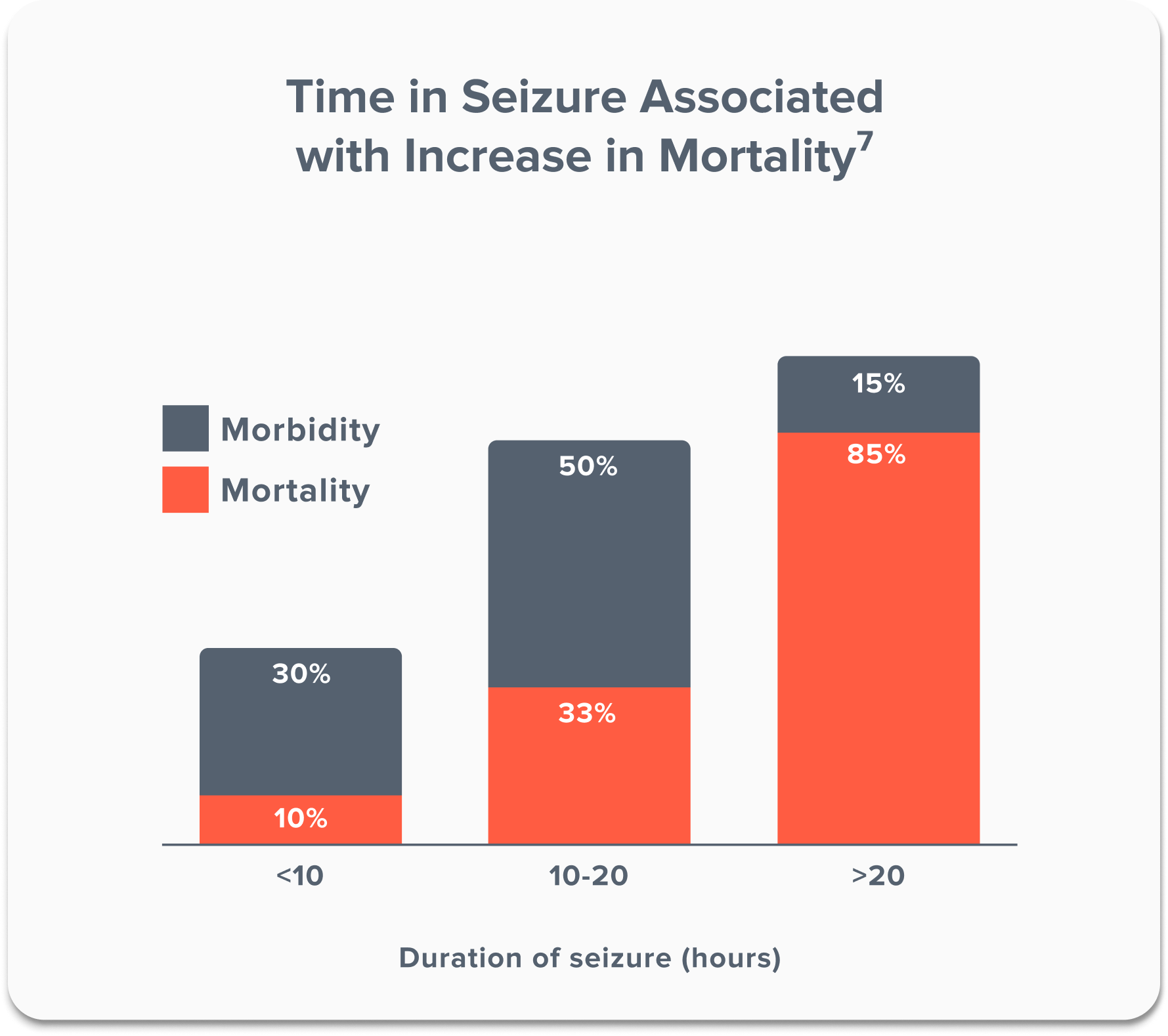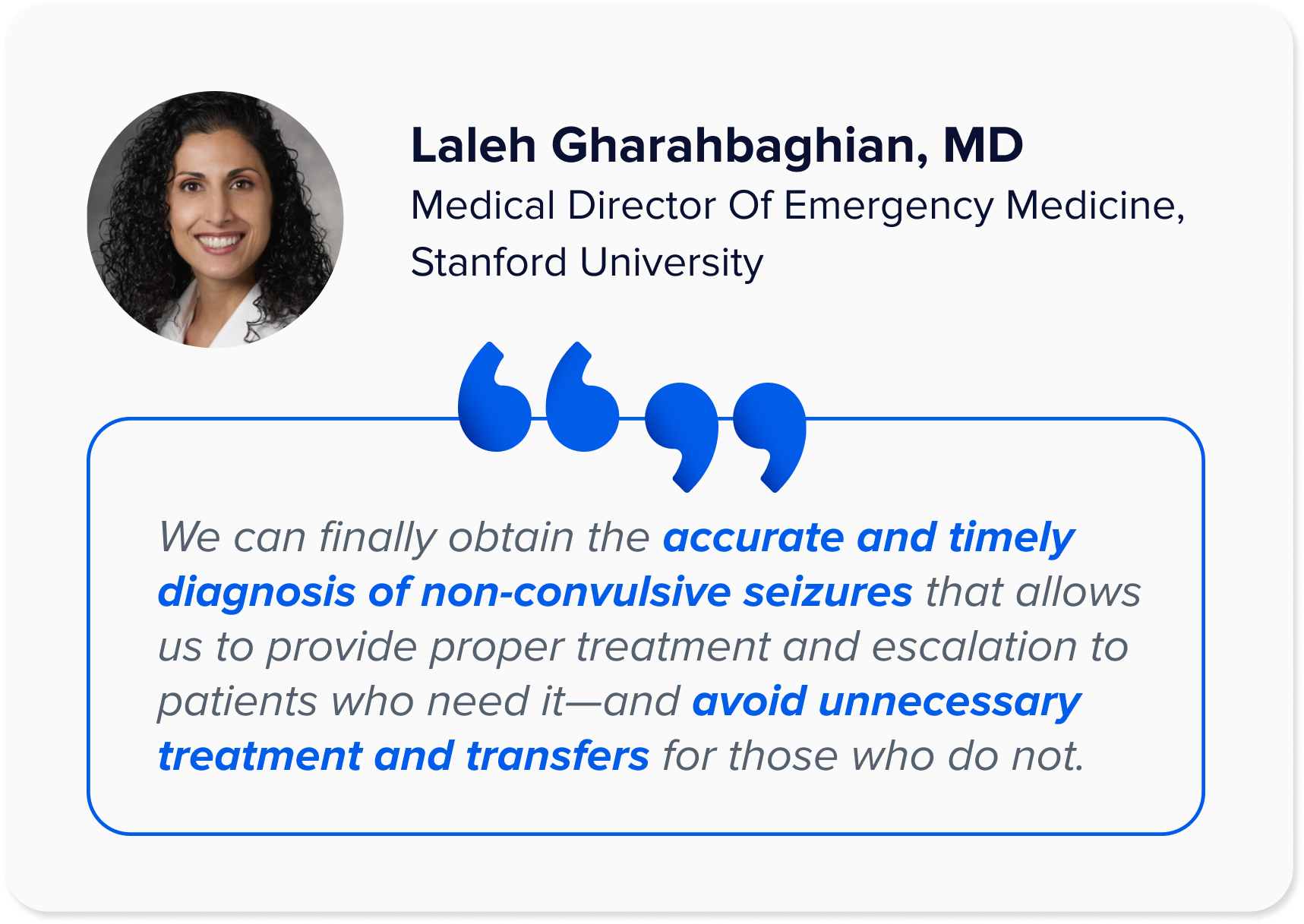
Ceribell for Rapid Seizure Triage of the Brain in the Emergency Department
On-demand and easy to use real-time brain monitoring at the bedside enables rapid and precise management of patients with suspected non-convulsive seizures
When did you last diagnose non-convulsive status epilepticus in the ED?
Convulsive and non-convulsive seizures are highly prevalent across at-risk patient populations
— Seizure Prevalence Rates —
20%
Stroke Mimic¹
Up to 23%
Prior Seizure2,3† (Not Returning to Baseline)
10-35%
Cardiac Arrest Post-ROSC4†
8-30%
Altered Mental Status5†
Every minute counts for favorable outcomes, starting in the ED


Without EEG, how would you know?
Ceribell: Clarity When It’s Critical
AI-enabled point-of-care EEG that delivers results to the ED in minutes for patients at risk of seizures

The Impact of Early Assessment with Ceribell

of ED patients with expedited disposition9

more patients from the Ceribell ICU cohort had better neurological outcomes*10

shorter median ICU length of stay with Ceribell vs. conventional EEG10
Over 100 EDs Use Ceribell On 20,000 Patients And Counting



Resources
In The News
In The News
Prevalence of Non-Convulsive Seizure and Other Electroencephalographic Abnormalities in ED Patients with Altered Mental Status
Read MoreIn The News



